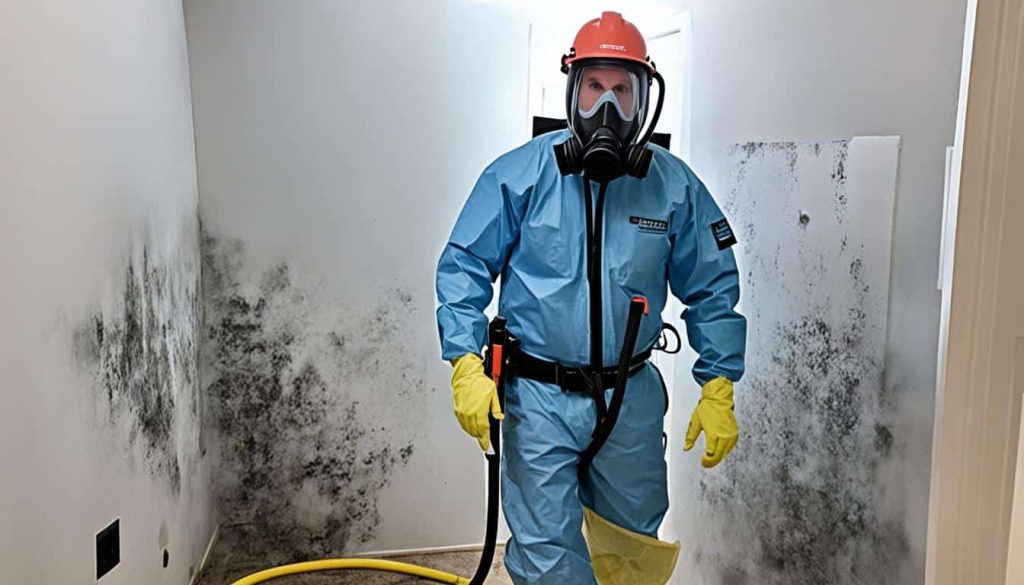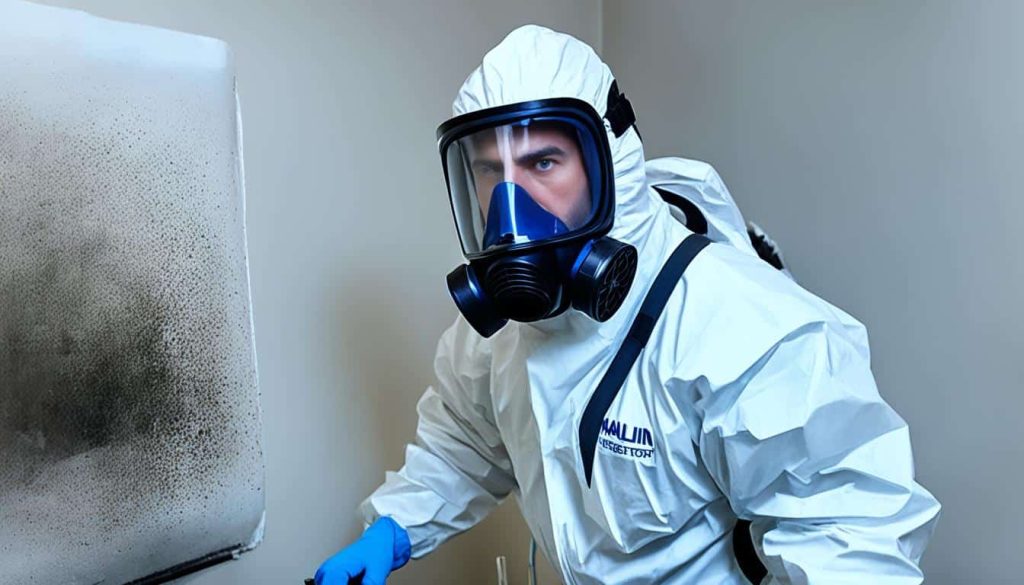Why is mold growing in my home? Mold is a natural part of our environment, playing a crucial role in breaking down and decomposing organic material such as fallen leaves and dead trees. This process is vital outdoors, where mold contributes to the health of ecosystems by recycling nutrients back into the soil. However, when mold finds its way into our homes, it can become a significant problem, both for the structural integrity of the building and the health of its inhabitants. This is why you need mold inspection remediation.
Mold is a type of fungus that reproduces through tiny spores, which are so small that they are invisible to the naked eye. These spores are always present in the air, both inside and outside. When these spores land on a damp or wet surface, they can begin to grow and spread, leading to what we commonly recognize as mold growth. The presence of mold in your home is not just an eyesore; it can indicate underlying issues with moisture and can potentially lead to health concerns.
Array of Solutions, a trusted name in mold removal in Greenville, South Carolina since 2007, stands ready to tackle your mold woes. With our expert mold inspection Greenville services and EPA-Registered credentials, we’re equipped to detect, remove, and prevent mold growth in your home or business.
Table of Contents
The Nature of Mold
Mold comes in many forms and colors, from white and green to black and brown. Different types of mold can grow in different conditions, but they all have one thing in common: they require moisture to grow. Mold spores can remain dormant for long periods until they encounter the right conditions—specifically, a combination of moisture, warmth, and organic material to feed on. Once these conditions are met, mold can begin to grow rapidly.
Indoors, mold can grow on a variety of surfaces, including wood, drywall, carpet, insulation, and even fabrics. It can also thrive in less obvious places like behind wallpaper, under flooring, or inside HVAC systems. The key factor that allows mold to grow in these places is moisture. Without moisture, mold spores cannot develop into active mold colonies.
Why is mold growing in my home?
If you’ve noticed mold growing in your home, it’s important to identify the source of moisture that is allowing the mold to thrive. Here are some of the most common reasons why mold may be growing in your home:
1. High Humidity Levels
High humidity is one of the most common causes of mold growth in homes. When the air in your home contains too much moisture, it creates a perfect environment for mold to develop. Humidity levels above 60% are particularly problematic and can lead to condensation on windows, walls, and other surfaces, providing the moisture mold needs to grow.
Certain areas of your home, such as bathrooms, kitchens, basements, and laundry rooms, are more prone to high humidity due to activities like cooking, showering, and drying clothes. These rooms often lack proper ventilation, which can trap moisture and lead to mold growth.
2. Water Leaks
Leaks from pipes, roofs, windows, or even appliances can introduce moisture into your home, leading to mold growth. Even minor leaks, if left unchecked, can result in significant mold problems over time. Often, these leaks occur in hidden areas such as behind walls, under floors, or in attics, making the mold difficult to detect until it has already spread.
Leaky pipes under sinks, faulty seals around windows, and damaged roofing are common culprits that allow water to seep into your home. The longer these leaks persist, the greater the chance that mold will develop.
3. Poor Ventilation
Poor ventilation can exacerbate moisture problems in your home by trapping humid air inside. When warm, moist air cannot escape, it can lead to condensation on cooler surfaces, such as windows and walls. This moisture can then create a breeding ground for mold.
Ventilation is particularly important in areas like bathrooms and kitchens, where moisture is naturally higher. Exhaust fans, open windows, and proper airflow can help reduce the risk of mold by keeping moisture levels in check.
4. Flooding and Water Damage
Flooding, whether from natural disasters, broken pipes, or overflowing appliances, can introduce a large amount of water into your home in a short period. If the affected areas are not dried out quickly, usually within 24 to 48 hours, mold can begin to grow.
Floodwaters can saturate building materials like drywall, insulation, and carpeting, creating ideal conditions for mold. Even after the visible water is removed, moisture can remain trapped in these materials, leading to hidden mold growth that can be difficult to detect and remediate.
5. Condensation
Condensation occurs when warm, humid air comes into contact with a cold surface. This can happen on windows, pipes, walls, and other surfaces where there is a temperature difference. The moisture that forms as condensation can provide the perfect conditions for mold to grow, especially in areas like basements, bathrooms, and kitchens.
Homes in colder climates are particularly susceptible to condensation-related mold problems, especially during the winter months when warm indoor air meets cold exterior walls.

Preventing Mold Growth in Your Home
The best way to deal with mold is to prevent it from growing in the first place. Since mold needs moisture to thrive, controlling moisture levels in your home is key. Here are some strategies to help you prevent mold growth:
- Maintain Proper Humidity Levels: Keep your home’s humidity levels below 60%, ideally between 30% and 50%. Use dehumidifiers in damp areas like basements and bathrooms, and ensure your home is properly ventilated.
- Fix Leaks Immediately: Regularly inspect your home for leaks and repair them as soon as possible. Pay close attention to areas around sinks, toilets, showers, windows, and roofs.
- Improve Ventilation: Ensure your home is well-ventilated, especially in areas prone to moisture like bathrooms and kitchens. Use exhaust fans, open windows, and consider installing vents if necessary.
- Dry Wet Areas Quickly: If your home experiences flooding, water spills, or leaks, dry the area thoroughly within 24 to 48 hours. This will help prevent mold from taking hold.
- Use Mold-Resistant Products: When building or renovating, consider using mold-resistant materials, such as mold-resistant drywall and paint, especially in areas prone to moisture.

Conclusion
Mold growth in your home is often a symptom of a larger moisture problem. By understanding the factors that contribute to mold growth and taking proactive steps to control moisture, you can protect your home from the damaging effects of mold. Regular maintenance, prompt repairs, and diligent moisture control are essential in keeping your home mold-free and ensuring a healthy living environment for you and your family.
